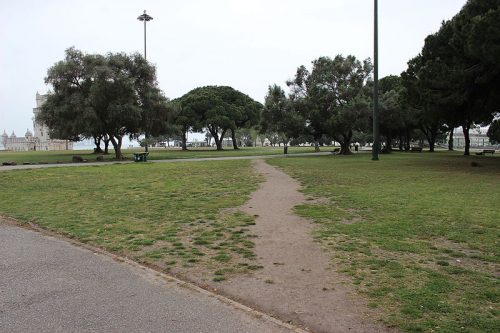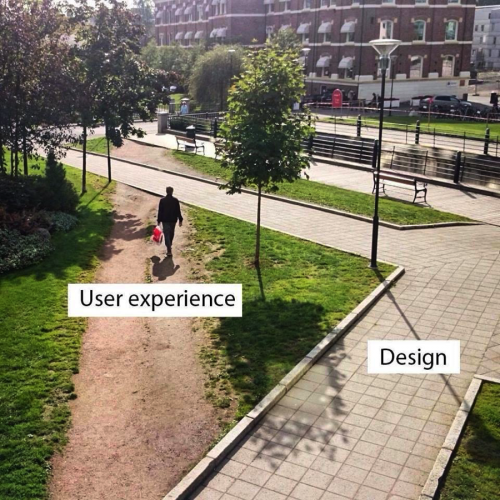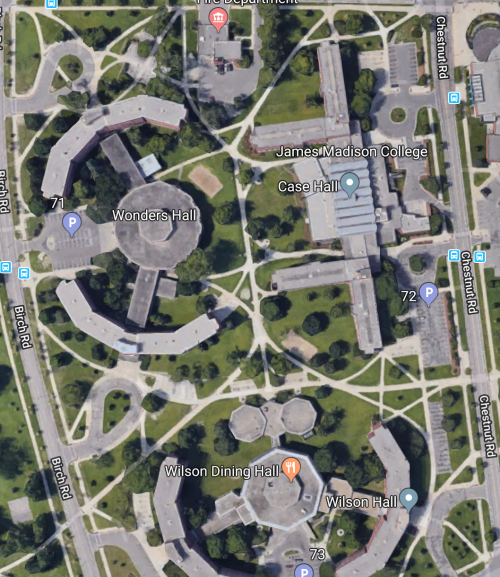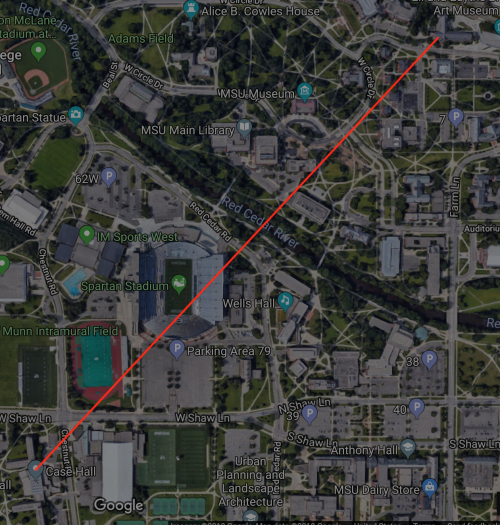The built environment reflects our social world. From urban streets that encourage neighborly relationships, to “hostile design” and policing practices that keep people out of public spaces, the physical structure of a space carries with it a whole set of assumptions about how people should interact in that space.
But social structure isn’t always just imposed on us by architects and city planners. It also invites the opportunity for improvisation and innovation to create new norms. A great example of this is the emergence of “desire paths“—the people-made paths that defy, or improve on, the work of urban design.

Desire paths were the bulk of my commute for years without even realizing it. When you walk a lot, you start to see how much our neighborhoods aren’t built for this most basic kind of travel. It is fun to spot these paths along the way, because they show little pockets of collective action where people have found a better way to get from point A to B. Authors like to highlight how some universities, for example, even wait for desire paths to emerge and then pave them to fit students’ commuting routes.

That said, it is also important to pay attention to the limits that urban design, like all kinds of social structures, continues to impose in our communities. Research shows that walkability may only be weakly related to the social health of a neighborhood, since community cohesion takes more work than just putting people in the same space. Walkable neighborhoods also attract more drivers as people commute in to walk around to shops and restaurants. My alma mater, Michigan State University, paved a ton of desire paths in student neighborhoods across campus. It was great, but if you needed to get to the other side of campus for class in a pinch, there was still the matter of that big stadium complex in the way. Sometimes social improvement still takes a bit more conscious effort.



Comments 17
Lunad — March 22, 2019
Our campus put out a big bulletin and posted signs begging students to stop using a particular desire path because it was killing a 100 year old tree.
William Chambers — May 29, 2020
Hi, a good topic to think about, if you are interested in this topic, then I think that it will be interesting for you to look at https://edubirdie.com/coursework-writing this educational platform where you can find more useful information.
unique submission — September 1, 2020
We at Unique Submission. We have our ability in each type of Online Assignment Help which Includes Dissertation Writing, Essay Writing, Assignment composing, Research Proposal Writing, Admission essay composing, Coursework composing and many more.
Get The Best Assignment Help From Best Assignment Helpers Online
Hares Werev — January 21, 2021
The most great adolescents are constantly set up to visit with you and meet you on an extraordinary site. where you can investigate assessments and affiliations. It will as of now sensibly help you with being the best benaughty review individual and a great life assistant. You will have the choice to look at the future life
Peter Sanders — April 25, 2021
Thanks for sharing such informative article. Doctor of Nursing Practice (DNP) project essentially examines how well one understands the field of nursing practice and one’s ability to solve a real world public health problem. Owing to the fact that working on this type of project can be somehow difficult, some scholars opt to order for DNP Capstone Project Writing Help.
Payless Vouchercodes — May 29, 2021
I've found your blog and read all the articles. Interesting. Useful. Practical. Love to read more from your blog.
Katherine Annie — January 21, 2022
It’s a very interesting article, you don’t see that very often. It is much more difficult to write a good essay, which I was assigned at university. It’s great that I found a good service best writing services . There are real writers working there, who came to help me in this difficult moment, click here: https://www.cheapestessay.com/coursework-writing-services
Best Gynaecology in Kasaragod — January 26, 2022
The article you have shared is very much informative. I liked it very much. Forging new path article is really interesting. love to see more useful posts from your side.
slope io — October 21, 2022
I discovered your blog and read every item. It's interesting and useful. Would adore reading more of your blog.
tutyiwq — October 21, 2022
You don't read articles like these very often, but they are quite interesting slope io. A decent essay, which I had to write for class, is considerably more difficult to produce. It's wonderful that I was able to locate a dependable provider.
chimneypies — November 1, 2022
The survey team also gathered information on the respondents' gender, age, past festival participation, how much people visited their camp sites, and how much they appreciated the phrazle party environment personally. Then, they mapped out the festival's crowd density and the distance between each campsite and the main stage using aerial photography.
Mitchell Reilly — November 13, 2022
I am grateful for the information basket random and the suggestions that you have provided. I will make an effort to understand it better for more.
anjileena — January 5, 2023
That was really nice and informative for me thank you so much.
marie willi — January 5, 2023
Your topic was quite interesting and i still remember the college you mention in the map was memorable from where i started helping student as a thesis helper and helping students since many years.
irene jane — July 26, 2023
This is, in my opinion, one of the best posts that you have made. Your work is quite outstanding in both quality and quantity. I am grateful to you for it. globle game
vlone — October 17, 2023
Hurry up to buy our vlone, our vlone can follow the trend all the time, you will like our Vlone now in our store, are you waiting now?
orabelle hana — December 19, 2023
I think that's a big problem flagle